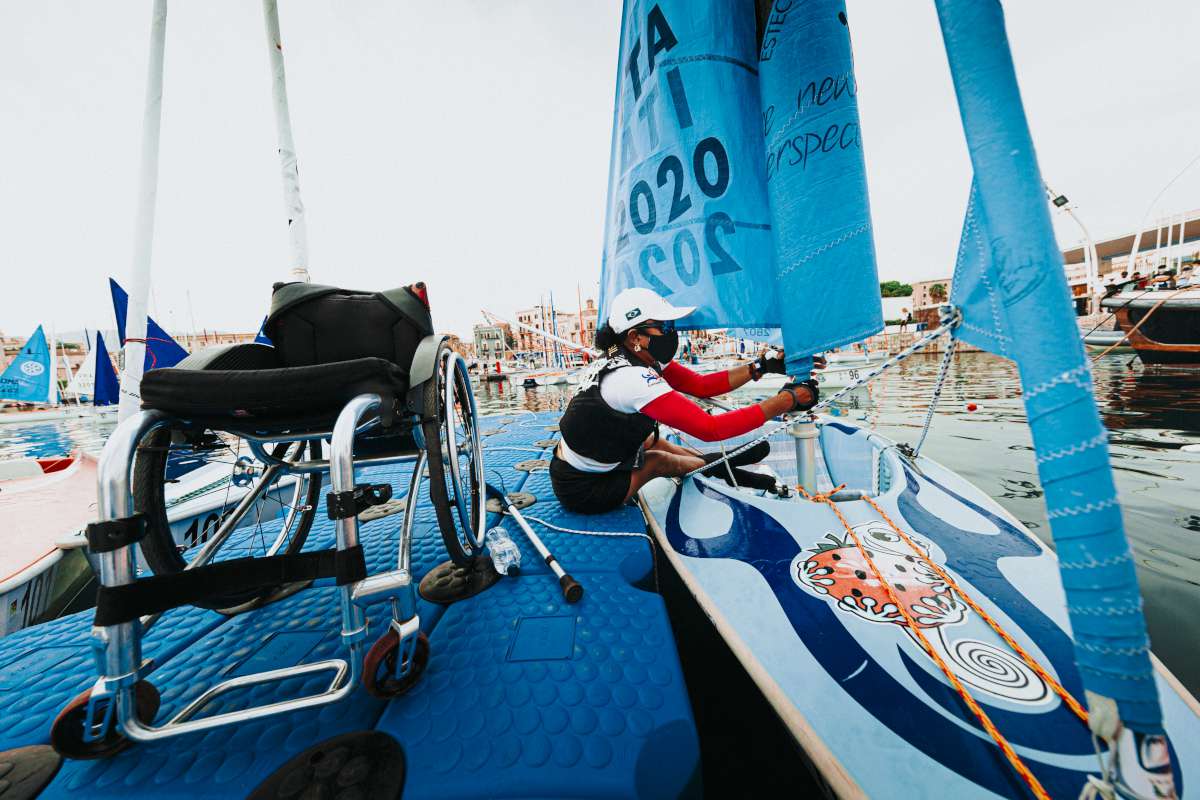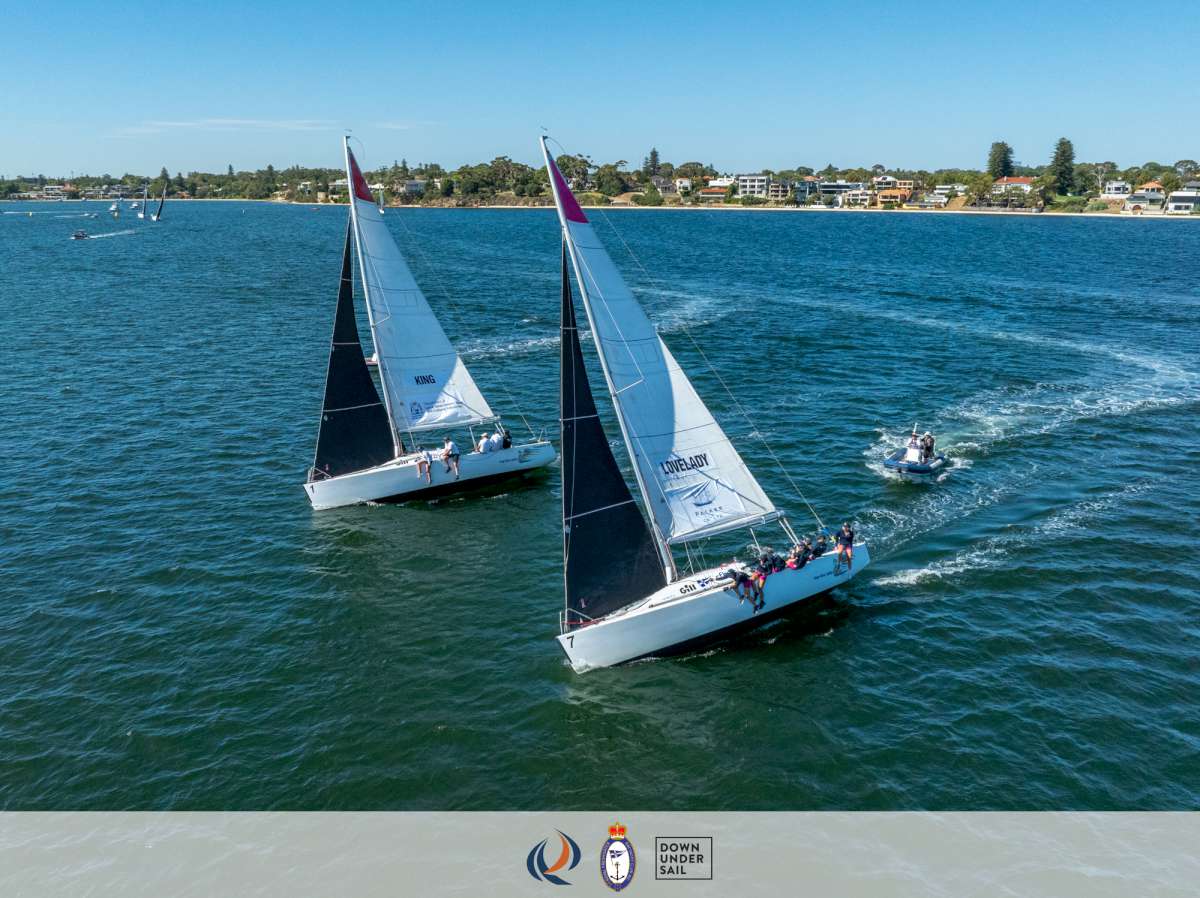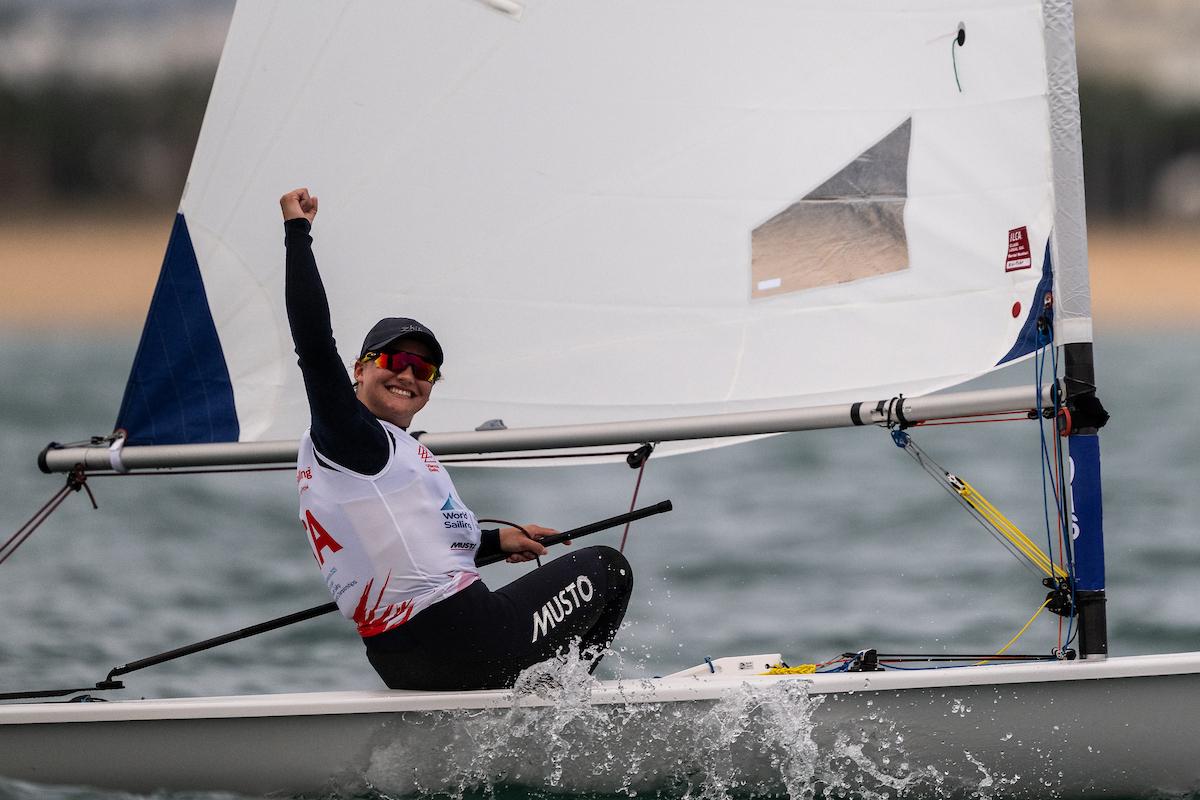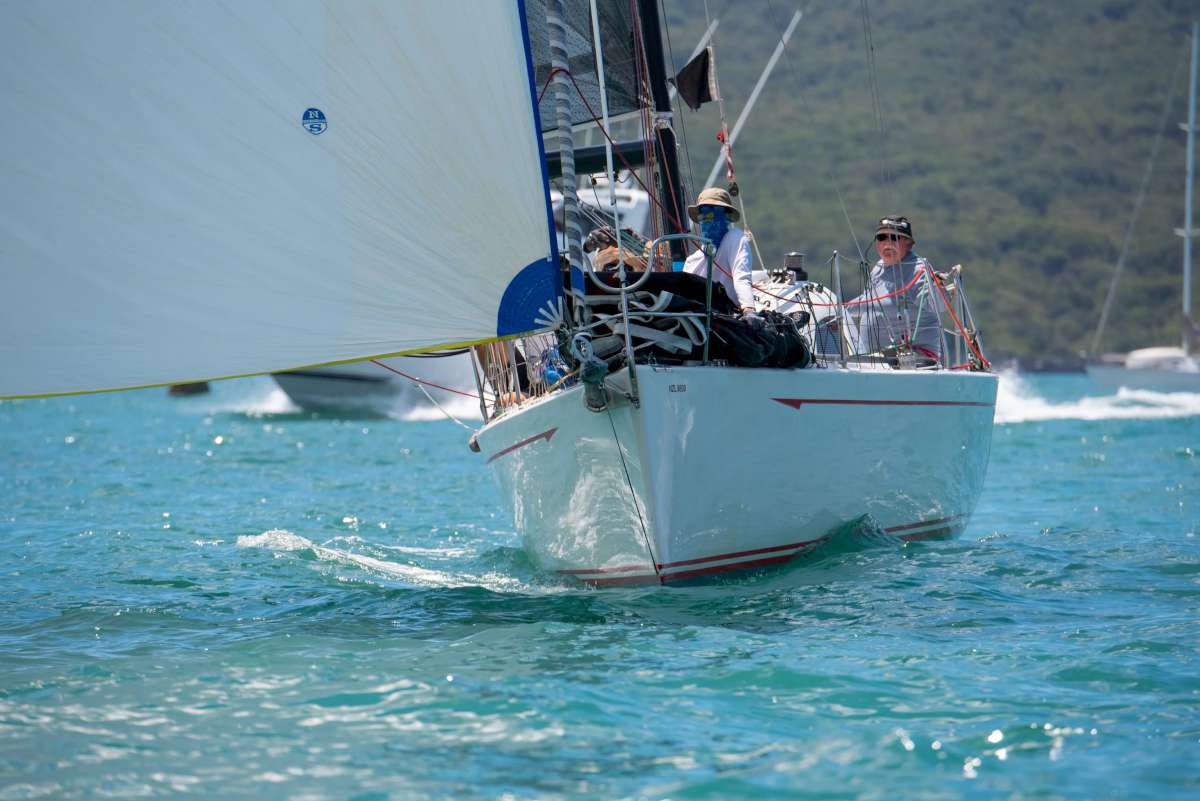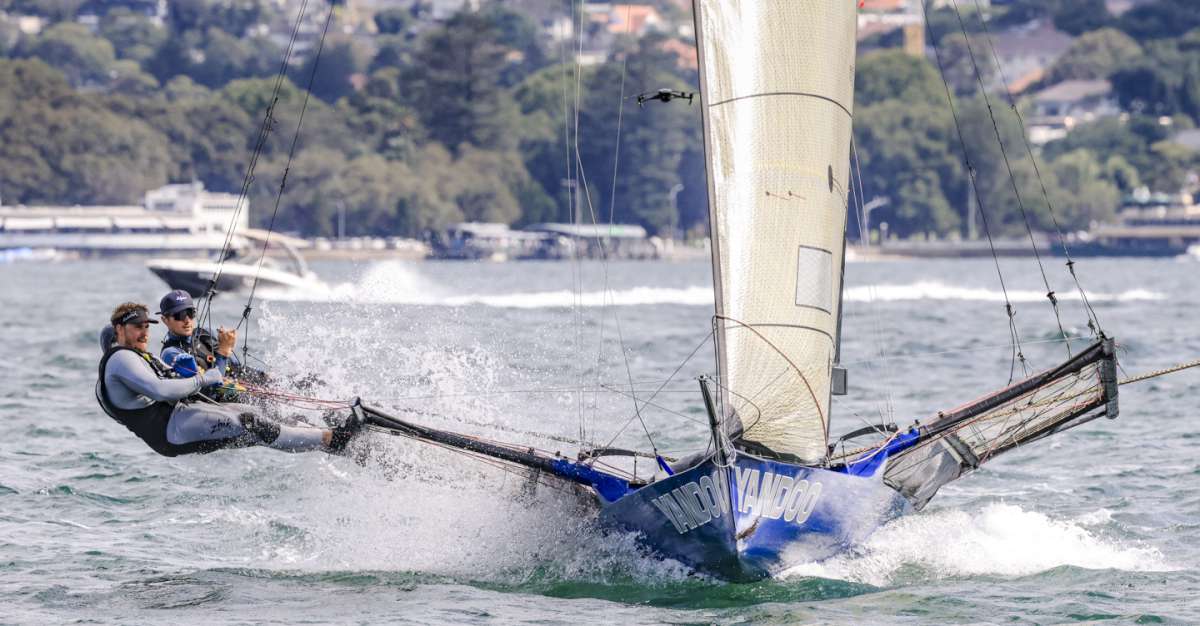Destination: Trinidad
Jim and Linda Collier take time out from circumnavigating the world to experience one of the world's great events – the Trinidad-Tobago Carnival – and to do some much-needed maintenance.
Our 31-day Atlantic crossing astern but still fresh in our minds, a wet and grey dawn saw us making landfall, from Barbados, off Man of War Bay on the NW coast of Tobago.
The entrance well hidden in one of many rain squalls, it looked for a while as if we might have to continue on to Trinidad, but fortunately the squall passed and the weather lifted sufficiently for us to sail into one of the best natural harbours in the Caribbean.
Despite its name, peace and tranquillity reigned in Man of War Bay as we cast Liberator's anchor into its still waters, the huge Atlantic rollers of recent times replaced by gentle undulating hills covered in lush green troThe cloud soon dissipated, and we sat in brilliant sunshine soaking up the natural beauty of our surroundings, the only sound a lone steel drum (pan) from a house up on the hillside, no doubt practising for the forthcoming Trinidad-Tobago Carnival.
We lingered a while in this undeveloped and idyllic spot, unable to go ashore because we had not cleared in, but content to spend all the time on board, at peace with ourselves and life in general.
A few days later, rested and recuperated, an overnight passage saw us on our way to Trinidad, and by daybreak we were passing through the turbulent waters of the Bocas del Dragon (Mouth of the Dragon), our speed over the bottom down to 1/2 a knot at times as we fought the fierce current and thousands of jellyfish exiting the Gulf of Paria.
We persevered, eventually breaking free and able to lay our course for the anchorage at Chaguaramas (a few miles west of the capital Port of Spain). After clearing in with the authorities ð breaking the ice with a stern-faced immigration Officer with a little banter over cricket – we were free to go ashore.
Event spectacular
The Trinidad-Tobabo carnival is an event spectacular par excellence. Held annually, its climax is a street parade and party that lasts the two whole days and nights immediately preceding Ash Wednesday.
Preparations for the next carnival commence virtually as soon as one finishes, so everything was in full swing by the time we arrived three weeks before the finale, and we were soon pounding the streets touring the rehearsal sites of the steel bands known as panyards.
Visitors are made very welcome at the panyards, and it is almost impossible to describe the sensation of standing in the middle of a 130-strong steel band as they give their all.
The steel drum (pan) is the national instrument of Trinidad-Tobago and national competitions for the best band are just a few of the many events taking place in the two weeks immediately preceding the carnival. All are open to the public, and at the preliminary competition it is wall-to-wall steel bands. We also visited a number of “Mas Camps”, headquarters of various groups of paraders (known as masqueraders), where the costumes and floats are manufactured.
Masqueraders parade through the streets on carnival Monday and Tuesday following their favourite steel band or truck booming out calypso. Visitors can sign up as masqueraders and are made most welcome, and many of the 200-plus cruising boats visiting Trinidad for carnival involve themselves wholeheartedly in the event.
To ensure the crews of visiting vessels can get to and from carnival, special buses operate between all anchorages and marinas and the Queens Park Savannah located in the heart of Port of Spain from where the street parade commences.
It is incredible how the whole community ð the majority of whom are extremely poor ð become stricken with carnival fever and completely immerse themselves in “de carnival”, from the president down to the poorest in the land.
There are no limits to the lengths of imagination the costume designers go to. When literally thousands of Trinidadians (Trinis) dress in them on the last day the streets of Port of Spain are a mass of pageantry echoing to the pulsating rhythm of calypso and the unique melodic tone of countless steel drums. Definitely an event not to be missed.
AUTHhRS BIO.
Jim and Linda spent 10 years cruising the world in their 10m John Pugh Moonwind-design steel ketch, Liberator of Launceston. Well-known environmental activists in Tasmania before their departure, the Colliers are currently fighting to prevent a massive chemical pulp mill being built in their sensitive Tamar Valley.
Facts & further info
Facilities
Situated outside the active hurricane area, Trinidad is a very popular layover place for cruising boats.
Many crews remain with their vessels, taking the opportunity to catch up on overdue boatwork, while others return home, leaving their boats in the excellent long-term hardstand storage areas. Yet others call in just for carnival and head off for Panama via Venezuela or north through the Windward and Leeward Islands to the US.
Facilities for the cruising vessel are excellent. There are several boatyards (some offering hotel-type accommodation) in the immediate area with travel-lifts catering for vessels between 50 and 200 tonnes.
Support services such as chandleries, sail lofts, sandblasting, spray-painting, electrical and mechanical repairs/services and osmosis treatment are available; in fact, just about everything a cruising boat needs is located within a few square kilometres.
We spent just under a year in Trinidad, choosing to haulout with Peakes Yacht Services, where every care is taken during this operation, even to sending a diver down to ensure the slings are positioned correctly.
At Peakes subsequent to haulout vessels are transferred from the travel-lift to a high-tech trolley for positioning on the hard. Again every care is taken but, even with the most meticulous attention, accidents can happen (as per one of the photos with this article).
Apart from removing the troWe lived on board for the whole seven months we were on the hard. Yes, life became difficult at times, especially during sandblasting, but we managed.
Climate
Trinidad's climate is similar to northern Australia, with the wet season between June and December.
Another attractive feature is that costs in Trinidad are approximately one to two-thirds less than elsewhere in the Caribbean.
Charts and cruising guides
Trinidad and Tobago are well covered by all the official charts (Admiralty and US government charts produced by the National Oceanic & Atmospheric Administration), but we recommend the Imray-Iolaire range of yachting charts for the Caribbean Sea, which we found excellent.
In addition to the charts a most comprehensive range of cruising guides by Don Street and Chris Doyle is available and – used in conjunction with the charts – provides the navigator with all the information they require, not just for on the water but ashore as well.
Visas
Visas are normally issued on arrival to Australian cruisers on a three-month renewable basis at a cost of approximately $100 US per time. They are easily extended up to 12 months.
Wild and wonderful
The two-island country of Trinidad-Tobago is a wildlife enthusiast's delight with more than 430 different species of birds (including the spectacular scarlet ibis), 620 various species of butterflies, 2300 diverse flowering shrubs and plants and up to 100 types of mammal, including a huge variety of bats and 70 different reptiles.
A visit to the Asa Wright Nature Centre in the northern range is highly recommended.






